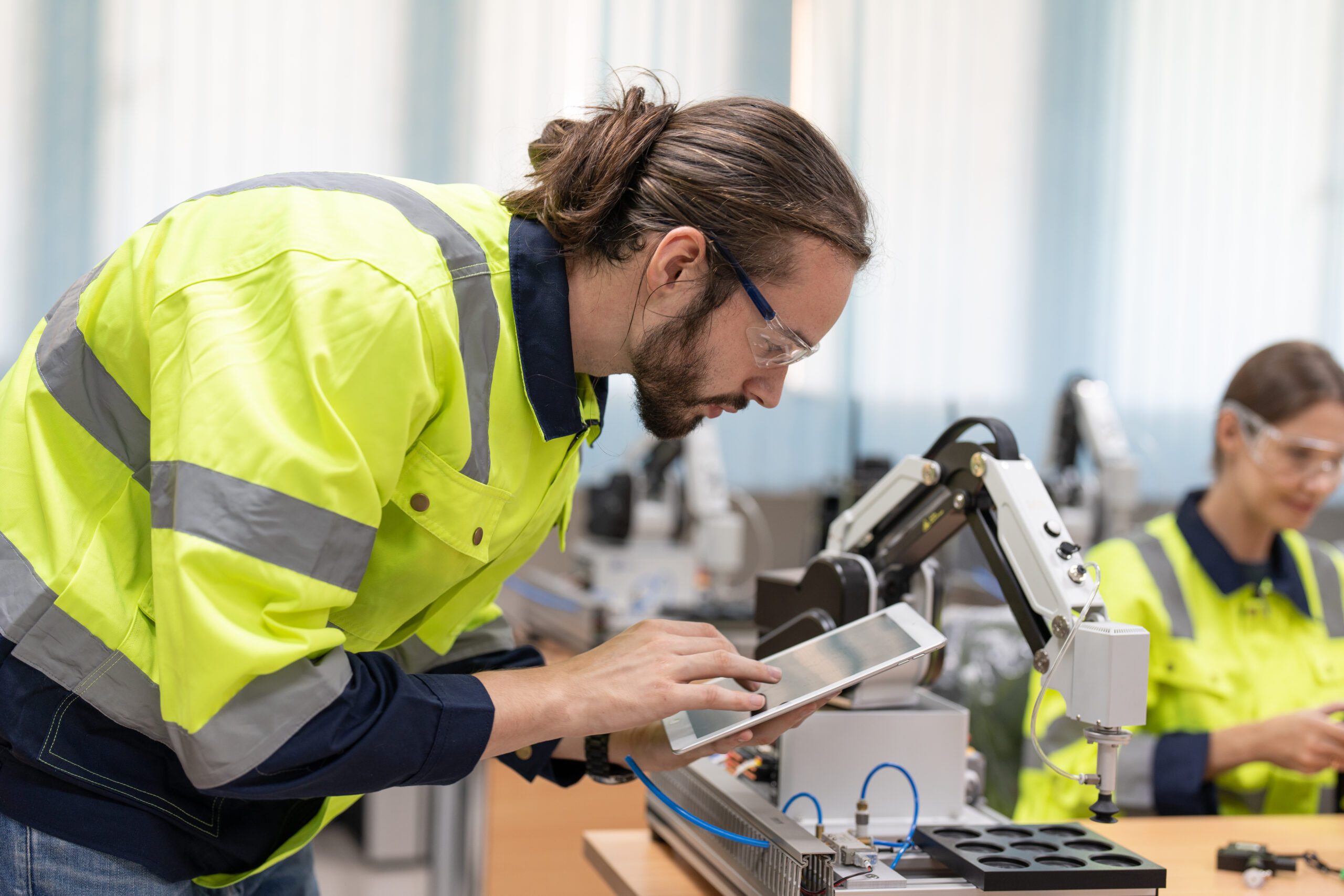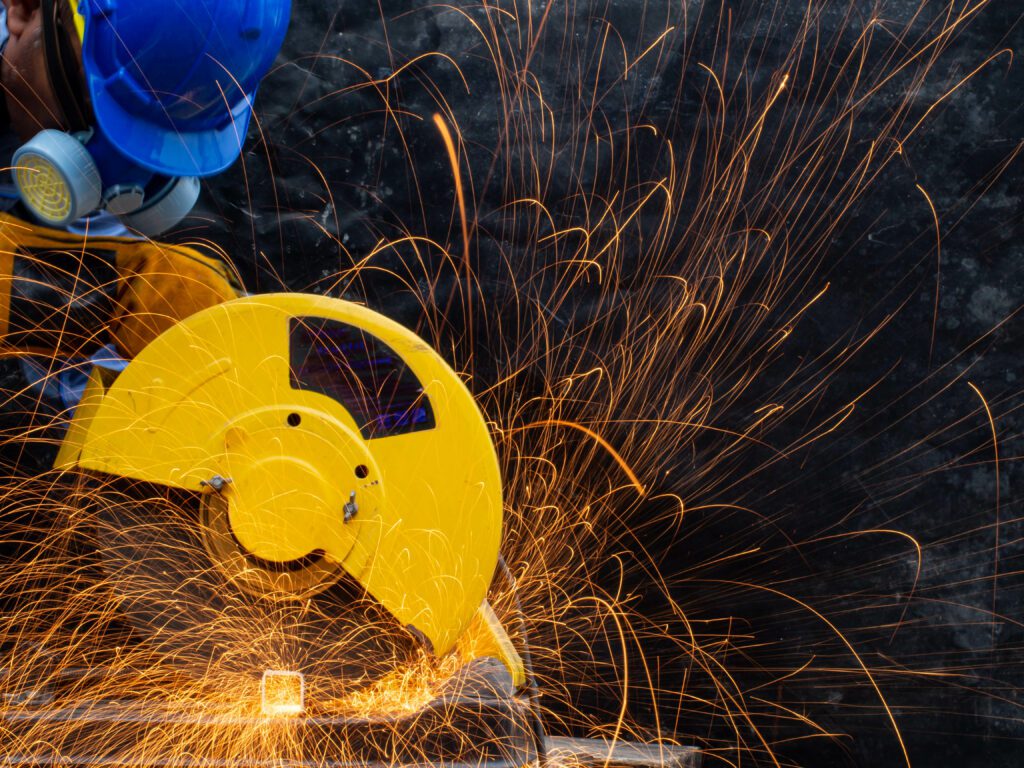The construction industry, traditionally reliant on manual labor and established practices, is experiencing a profound transformation with the infusion of Artificial Intelligence (AI). In an era where technological advancements are reshaping every sector, AI is emerging as a critical force in revolutionizing the construction landscape. This article explores the innovative applications of AI in construction, with a specific emphasis on how it contributes to enhanced safety and efficiency across various dimensions of the industry.
AI’s Integration in Construction: The construction sector is witnessing a paradigm shift as AI technologies become integral to its operations. From project planning to execution, AI is making its mark.
Significance of AI in Improving Safety and Efficiency: The incorporation of AI in construction not only streamlines processes but also addresses longstanding concerns related to safety and efficiency.
Predictive Maintenance: A Proactive Approach
Predictive Maintenance in Construction: Defining predictive maintenance and understanding its relevance in construction. AI-driven predictive maintenance is reshaping how the industry approaches equipment upkeep.
Benefits of AI-Driven Predictive Maintenance: The proactive nature of predictive maintenance powered by AI brings numerous benefits, including cost savings and minimized downtime.
Real-world Examples of Successful Implementation: Case studies highlight instances where predictive maintenance has demonstrated tangible improvements in construction operations.
Construction Site Monitoring: Eyes Everywhere
AI-Based Surveillance and Security Systems: How AI is augmenting traditional surveillance systems to provide comprehensive security solutions for construction sites.
Remote Monitoring and Control Applications: The role of AI in enabling remote monitoring and control, allowing construction professionals to manage projects from anywhere.
Case Studies Demonstrating Improved Site Monitoring: Real-world examples showcase how AI-powered site monitoring leads to enhanced safety and efficiency.

Autonomous Construction Equipment: The Rise of Machines
AI-Powered Machinery in Construction: An exploration of autonomous construction equipment and the role AI plays in their operation.
Advantages and Challenges in Implementing Autonomous Equipment: The benefits and potential challenges associated with integrating autonomous construction machinery.
Future Prospects of Autonomous Construction: Anticipating the future trajectory of autonomous construction equipment and its implications for the industry.
Robotics and AI in Construction: A Collaborative Frontier
Introduction to Collaborative Robots (Cobots): Understanding the concept of collaborative robots and their applications in construction.
AI-Enhanced Robotic Construction Processes: The synergy between AI and robotics, particularly in automating intricate construction processes.
Case Studies Showcasing Synergies between AI and Robotics: Real-life examples illustrating the collaborative potential of AI and robotics in construction.
AI-Driven Design and Planning: Blueprint for Efficiency
Generative Design and Its Impact on Construction: Exploring generative design and its transformative effects on construction planning and design.
AI Applications in Streamlining Project Planning: The role of AI in optimizing project planning, resource allocation, and scheduling.
Exemplary Projects Showcasing AI-Integrated Design: Case studies highlighting successful projects where AI-driven design has played a pivotal role.
Addressing Safety Concerns: AI as a Guardian
AI’s Role in Enhancing Jobsite Safety: An examination of how AI contributes to creating safer construction environments for workers.
Ensuring Ethical AI Implementation in Construction: The ethical considerations associated with AI adoption in construction and guidelines for responsible use.
Regulatory Frameworks and Guidelines: Existing and potential regulations governing the ethical use of AI in construction.
Challenges and Future Considerations: Paving the Way Forward
Overcoming Obstacles in AI Adoption: Identifying common challenges in the widespread adoption of AI in construction and potential solutions.
Anticipated Future Developments in AI for Construction: Predicting the trajectory of AI advancements and their impact on the future of construction.
Striking a Balance: Human Expertise and Technological Innovation: The importance of balancing AI integration with the expertise of human professionals in construction.
Conclusion
Recap of Key Contributions of AI in Construction: Summarizing the pivotal contributions of AI to safety, efficiency, and innovation in construction.
Looking Ahead: The Continuous Evolution of AI in the Construction Industry: Reflecting on the dynamic nature of AI’s role in construction and the ongoing evolution of the industry.
This comprehensive exploration of AI in construction aims to provide readers with a detailed understanding of how emerging technologies are reshaping traditional practices. By focusing on predictive maintenance, construction site monitoring, autonomous equipment, robotics, and AI-driven design, this article showcases the multifaceted impact of AI on safety and efficiency in construction. As we navigate the intersection of technology and construction, it becomes evident that AI is not just a tool but a catalyst for building a smarter and safer future.
